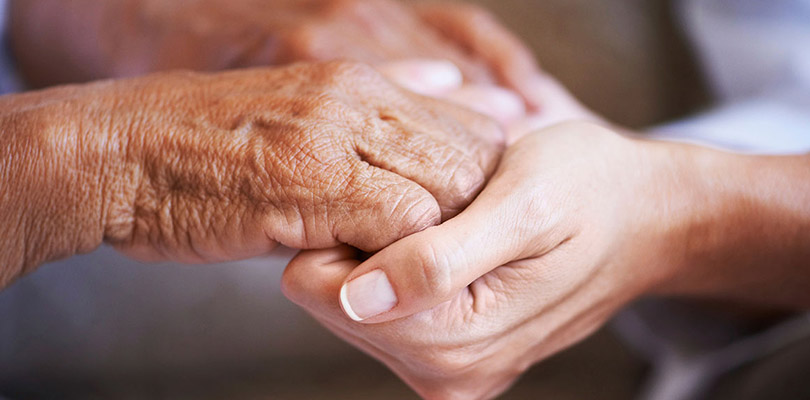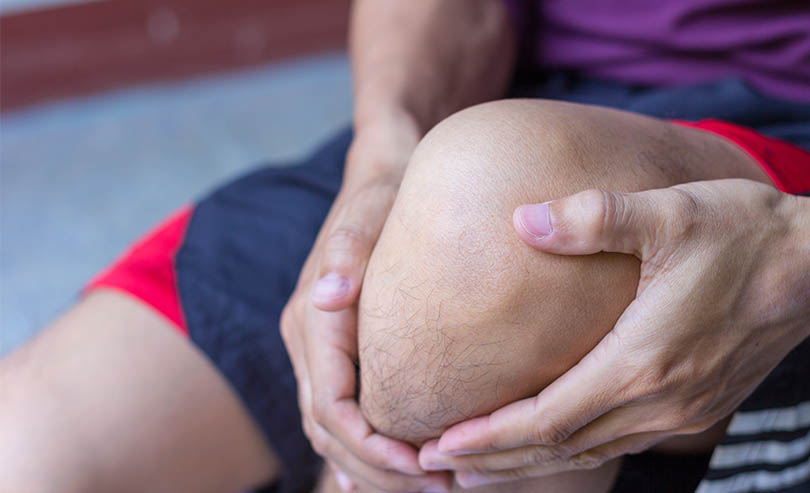What You Need to Know About Osteoporosis and Rheumatoid Arthritis
Osteoporosis and rheumatoid arthritis are two very different conditions, with a surprising number of similarities. Both are more likely to affect women than men, and both can lead to symptoms such as pain and deformities.
Additionally, people who have rheumatoid arthritis may be at greater risk of developing osteoporosis later in life. This is due to a combination of medication, lack of mobility, and possibly even as a direct result of the disease.
Five Differences Between Osteoporosis and Rheumatoid Arthritis
Let’s take a closer look at some of the key differences between osteoporosis and rheumatoid arthritis, and how these two conditions could be related.
Bones vs. Joints
The most obvious difference between osteoporosis and rheumatoid arthritis is that osteoporosis affects the bones, whereas rheumatoid arthritis affects the joints.
Bones are made up of a combination of collagen fibers and minerals such as calcium. These minerals give the bones their structure and strength, allowing them to support the weight of our bodies. In osteoporosis, the concentration of these minerals is reduced and the bones become weak, brittle, and sponge-like. This increases the risk of fractures in the affected bones.
Joints are the meeting point of two bones, and they allow us to move our bodies freely. In the joints, the ends of the bones are covered with a substance called cartilage and surrounded by a capsule known as the synovium. The synovium produces synovial fluid, which lubricates the bones and stops them from grinding together as we move. In rheumatoid arthritis, the synovium becomes inflamed leading to pain, stiffness, and swelling.
Symptoms of Osteoporosis and Rheumatoid Arthritis
Although some of the symptoms of osteoporosis and rheumatoid arthritis are similar, there are some key differences too.
Osteoporosis most often affects the bones of the wrists, hips, and spine. It does not usually cause pain until a bone is fractured, and for this reason, it is often referred to as a ‘silent disease.’ When the bones of the spine (vertebrae) are repeatedly fractured over time, this can lead to the stooped posture that is commonly seen in people with advanced osteoporosis.
Rheumatoid arthritis most often affects the small joints of the wrists, hands, and feet. These joints become painful and swollen, making them more difficult to use and sometimes leading to permanent deformity.
Rheumatoid arthritis symptoms can come and go. When they suddenly become very severe, this is known as a flare-up. Other symptoms associated with rheumatoid arthritis include carpal tunnel syndrome, anemia, fatigue, and weight loss.
Causes of Osteoporosis and Rheumatoid Arthritis
Both osteoporosis and rheumatoid arthritis are more common in women than men. However, the underlying causes of these two conditions are very different.
Bone mineral density decreases naturally with age, but in extreme cases too much bone is lost too fast, leading to osteoporosis. Osteoporosis is more common in women as female hormones play an important role in maintaining bone mineral density. For this reason, this condition is more likely to occur in post-menopausal women, especially those who go through menopause before the age of 45.
Other risk factors for osteoporosis include genetics, being underweight, drinking alcohol, smoking, and certain medications and conditions.
Following an arthritis diet plentiful in fruits, vegetables, fish, beans, and nuts are good for your body and reducing pain overall.
Rheumatoid arthritis is thought to be an autoimmune disorder, meaning that the body’s immune system begins to attack its own tissues, in this case, the joints. The exact cause of rheumatoid arthritis is unclear, but it is thought to be partially influenced by genetics.
Unlike osteoporosis, rheumatoid arthritis can affect people of any age, but it most often develops in people aged 40–60 years. It is also more common in smokers.
Diagnosis of Osteoporosis and Rheumatoid Arthritis
Osteoporosis often goes undiagnosed until a fracture occurs. However, a diagnosis can easily be made using a special scan known as a DEXA scan which measures bone mineral density.
Rheumatoid arthritis, on the other hand, is more difficult to identify as there are many other conditions which cause similar symptoms. Blood tests can be used to check for the presence of certain antibodies and inflammatory markers, and x-rays or MRI scans can be used to look more closely at the affected joints.
Treatment of Osteoporosis and Rheumatoid Arthritis
The treatment of these two conditions is also very different. Osteoporosis can be treated with calcium and vitamin D supplements, a medication known as bisphosphonates which slow the deterioration of the bones, or drugs that influence hormonal balance.
It is important that people with osteoporosis take measures to avoid falls and accidents. This could include removing hazards from their homes or having regular sight and hearing tests.
Exercise is also essential as it strengthens the muscles, reducing the risk of fractures. People with osteoporosis may also be advised to eat a diet rich in calcium and vitamin D containing foods. These include dairy products, leafy greens, oily fish such as sardines and mackerel, and egg yolks.
There are two aims in treating rheumatoid arthritis. Firstly, the immune system should be regulated, and this can be done with drugs known as disease-modifying anti-rheumatic drugs (DMARDs) and biological drugs. Secondly, painkillers and anti-inflammatory drugs can be used to manage the symptoms of the condition. Some anti-inflammatory medications commonly prescribed include non-steroidal anti-inflammatory drugs (NSAIDs) like ibuprofen and corticosteroids, like prednisolone.
Like osteoporosis, exercise is important for rheumatoid arthritis, and many people find physical therapy helpful. Surgery may be an option in severe cases.
What Is the Link Between Osteoporosis and Rheumatoid Arthritis?
It is estimated that people with rheumatoid arthritis are 25–30 percent more likely to develop osteoporosis than the general population.
This could be due to a combination of the side effects of corticosteroid drugs which include reducing bone density and a lack of mobility. It is also thought that the two conditions could be more directly linked as osteoporosis often develops in the bones closest to arthritic joints.
If you have rheumatoid arthritis and are concerned about osteoporosis, ask your physician to arrange a scan.







